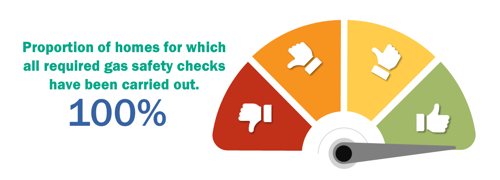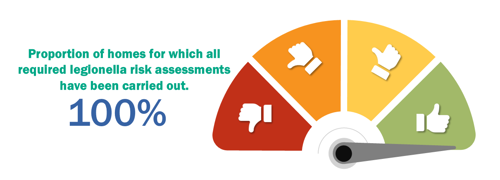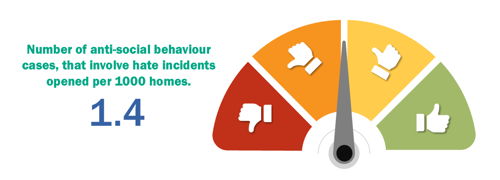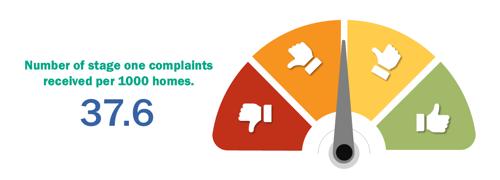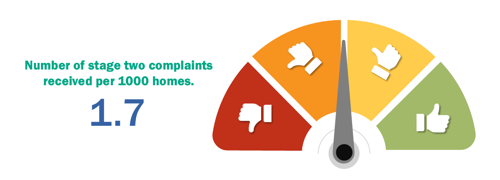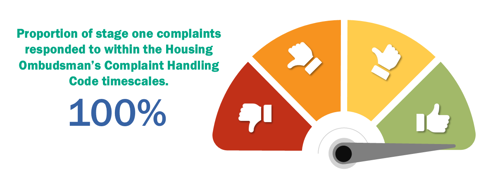
What are the TSMs
In April 2023, the Regulator of Social Housing introduced Tenant Satisfaction Measures (TSMs), to help social housing tenants see how well their landlord is performing compared to other organisations. There are 22 measures, covering 5 themes. The data is collected through management information and a resident survey. Ten of these are measured by landlords’ existing information, and twelve are measured by landlords carrying out tenant ‘perception surveys’ which ask people to share their experiences and opinions. You can read the full list of TSMs here and here is how we’re improving our services based on feedback.
What did we ask?
We asked a set of questions set out by the Regulator, which have to be asked in a set order and using specific wording – to help residents compare the results.
You can read the survey we used to calculate the TSM measures here.
If you took part, thank you for sharing your views. This provides us with an accurate picture of how our residents view our services and where we can improve. Residents are not offered incentives to take part.
Our results
Survey Period: The survey was completed between 19th June 2024 and 31st March 2025.
Please see the below set of infographics to see how we are doing:
Keeping properties in good repair

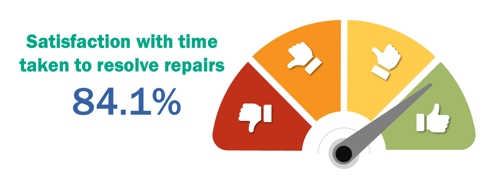

Maintaining building safety
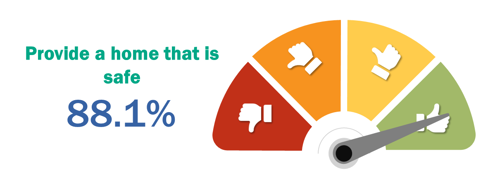
Respectful and helpful engagement
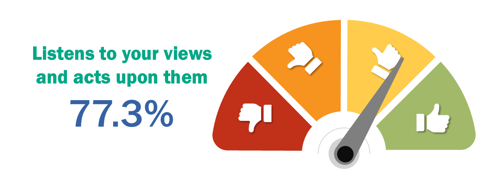

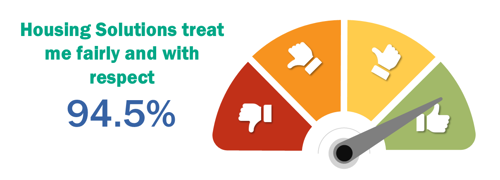
Effective complaints handling
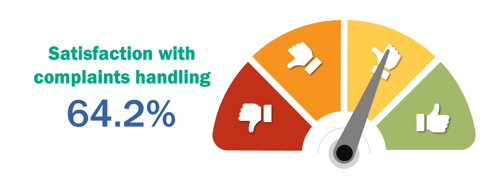
Responsible neighbourhood management
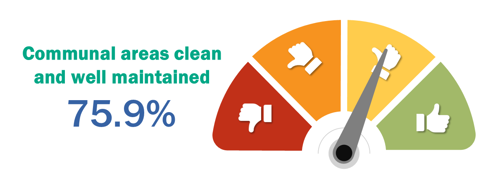
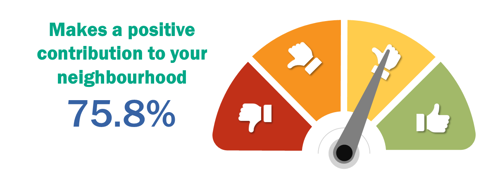


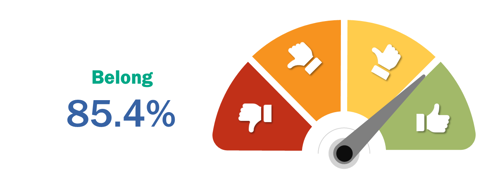

TSM Data Methodology for 2024-25
For the 2024-25 reporting period, we have updated our methodology for collecting Tenant Satisfaction Measure (TSM) information for our low-cost rental accommodation. This year, all surveying was conducted directly by our in-house team, building on insights gained from previous feedback and engagement activities.
Stock and Sampling: Our low-cost rental stock consisted of 5,165 homes. To ensure a statistically valid sampling approach and achieve a minimum overall accuracy of +/- 4% at a 95% confidence interval (as per the established TSM requirements), a minimum of 539 surveys were needed from the eligible population.
Survey Completion: We scheduled 560 surveys and successfully completed 578. This exceeds the minimum requirement and will contribute to a robust understanding of resident satisfaction. (Note: With 578 completed surveys from an eligible population of 5,145, the margin of error at a 95% confidence interval is approximately +/- 3.84%, the target +/- 4%.)
Data Collection Methods: starting in 2024, we transitioned from our previous hybrid external and internal collection methodology to an entirely internal collection approach. This reflects our position as a locally-based housing association and the importance for our colleagues to engage directly with our residents.
Our in-house teams were provided with the necessary guidance to conduct the surveys in accordance with TSM requirements
This year we also saw a greater proportion of surveys carried out in person (65.05%) with the remainder (34.95%) carried out over the telephone (80.7% of our 2023-24 surveys were telephone based). This shift was a result of TSM surveys being conducted during our annual Getting to Know You event.
This has now been running for nine years and, as a longstanding activity to gather both qualitative and quantitative data, was a crucial opportunity to collect TSM survey results.
Exclusions: From the population, 20 residents were excluded under permissible exceptional circumstances on the basis that residents are unlikely to provide a meaningful response to the vast majority of the TSM questions.
Survey Period: The surveys were completed between 19th June 2024 and 31st March 2025.
Representativeness
To ensure our Tenant Satisfaction Measures accurately reflect the views of our tenant population, we focused on housing type as a key factor in our sampling approach. Our Low Cost Rental Accommodation stock includes a variety of housing types, each associated with distinct service experiences.
We monitored response rates across these categories and took steps to improve coverage where needed. This helped ensure that the final results were not skewed toward any particular housing type and that the feedback gathered was representative of the range of homes we manage.
|
Tenant Perception Measures |
Relevant Tenant Population (% Total) |
Total Survey Responses (% Total) |
|
Housing Type |
||
|
Affordable Housing |
10.27% |
10.17% |
|
General Needs Housing |
78.05% |
77.64% |
|
Sheltered Housing |
5.84% |
5.81% |
|
Supported Housing |
5.13% |
5.27% |
|
Intermediate Housing |
0.53% |
0.51% |
|
Care Housing |
0.18% |
0.60% |
|
Tenant Age Band |
||
|
1920 - 1929 |
0.18% |
0.17% |
|
1930 - 1939 |
2.35% |
3.99% |
|
1940 - 1949 |
6.57% |
6.94% |
|
1950 - 1959 |
12.78% |
17.71% |
|
1960 - 1969 |
19.39% |
21.01% |
|
1970 - 1979 |
20.34% |
17.19% |
|
1980 - 1989 |
21.26% |
17.19% |
|
1990 - 1999 |
13.50% |
14.24% |
|
2000 - 2009 |
2.89% |
1.04% |
|
Unknown |
0.72% |
0.52% |
|
Tenant Gender |
||
|
F |
61.39% |
61.07% |
|
M |
35.46% |
37.37% |
|
O |
1.73% |
0.52% |
|
Unknown |
1.42% |
1.04% |
|
Local Authority |
||
|
Basingstoke |
0.56% |
1.05% |
|
Bracknell |
1.07% |
0.70% |
|
Buckinghamshire |
12.89% |
8.73% |
|
Royal Borough of Windsor and Maidenhead |
66.47% |
68.06% |
|
Reading |
2.31% |
2.44% |
|
Slough |
5.46% |
8.20% |
|
South Oxfordshire |
0.56% |
0.00% |
|
Wokingham |
10.66% |
10.82% |
|
Tenant Ethnicity |
||
|
Asian or Asian British |
5.38% |
7.27% |
|
Black, Black British, Caribbean or African |
3.60% |
4.84% |
|
Mixed or Multiple ethnic groups |
1.67% |
1.21% |
|
Other ethnic group |
5.79% |
6.40% |
|
Prefer not to say / Unknown |
22.74% |
23.01% |
|
White |
60.82% |
57.27% |
Management Information Measures
